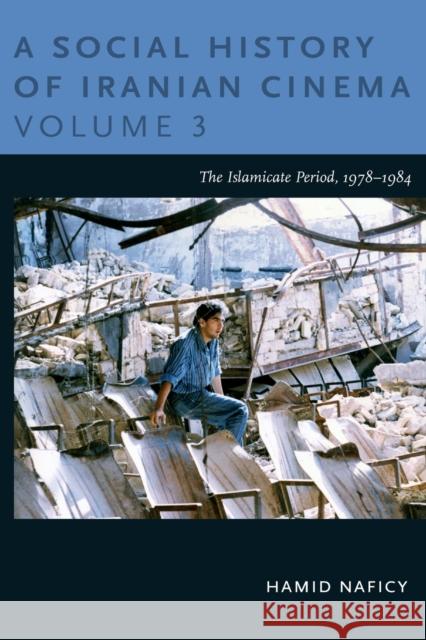A Social History of Iranian Cinema, Volume 3: The Islamicate Period, 1978-1984 » książka
A Social History of Iranian Cinema, Volume 3: The Islamicate Period, 1978-1984
ISBN-13: 9780822348771 / Angielski / Miękka / 2012 / 288 str.
Hamid Naficy is one of the world's leading authorities on Iranian film, and "A Social History of Iranian Cinema" is his magnum opus. Covering the late nineteenth century to the early twenty-first and addressing documentaries, popular genres, and art films, it explains Iran's peculiar cinematic production modes, as well as the role of cinema and media in shaping modernity and a modern national identity in Iran. This comprehensive social history unfolds across four volumes, each of which can be appreciated on its own.
In "Volume 3," Naficy assesses the profound effects of the Islamic Revolution on Iran's cinema and film industry. Throughout the book, he uses the term Islamicate, rather than Islamic, to indicate that the values of the postrevolutionary state, culture, and cinema were informed not only by Islam but also by Persian traditions. Naficy examines documentary films made to record events prior to, during, and in the immediate aftermath of the revolution. He describes how certain institutions and individuals, including prerevolutionary cinema and filmmakers, were associated with the Pahlavi regime, the West, and modernity and therefore perceived as corrupt and immoral. Many of the nation's moviehouses were burned down. Prerevolutionary films were subject to strict review and often banned, to be replaced with films commensurate with Islamicate values. Filmmakers and entertainers were thrown out of the industry, exiled, imprisoned, and even executed. Yet, out of this revolutionary turmoil, an extraordinary Islamicate cinema and film culture emerged. Naficy traces its development and explains how Iran's long war with Iraq, the gendered segregation of space, and the imposition of the veil on women encouraged certain ideological and aesthetic trends in film and related media. Finally, he discusses the structural, administrative, and regulatory measures that helped to institutionalize the new evolving cinema.
"A Social History of Iranian Cinema
""Volume 1: The Artisanal Era, 1897-1941
Volume 2: The Industrializing Years, 1941-1978
Volume 3: The Islamicate Period, 1978-1984
Volume 4: The Globalizing Era, 1984-2010
"











